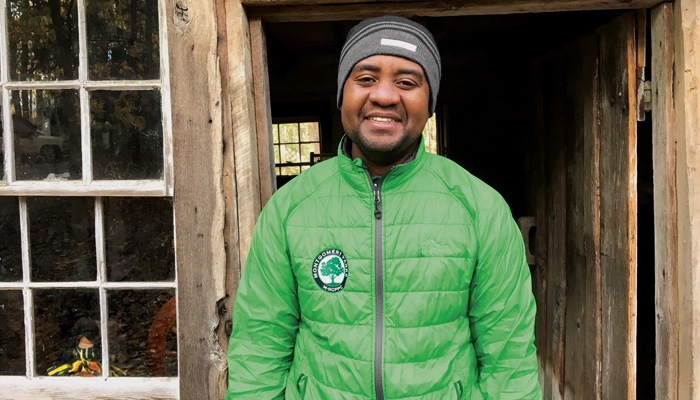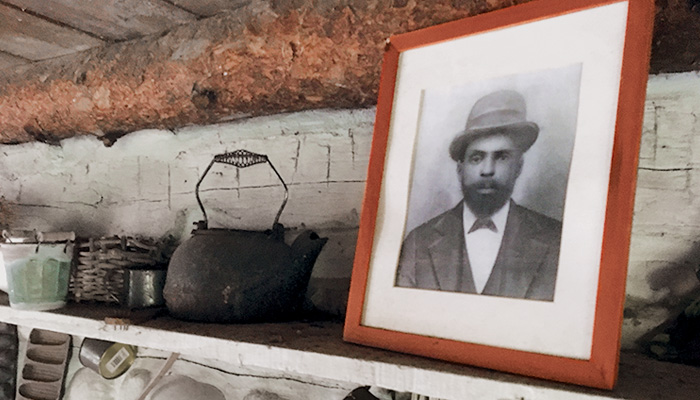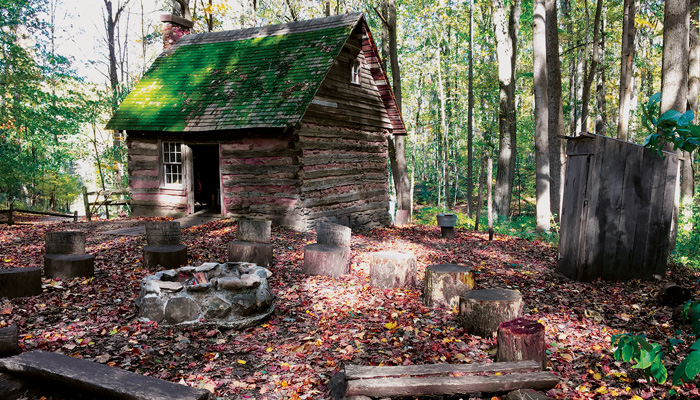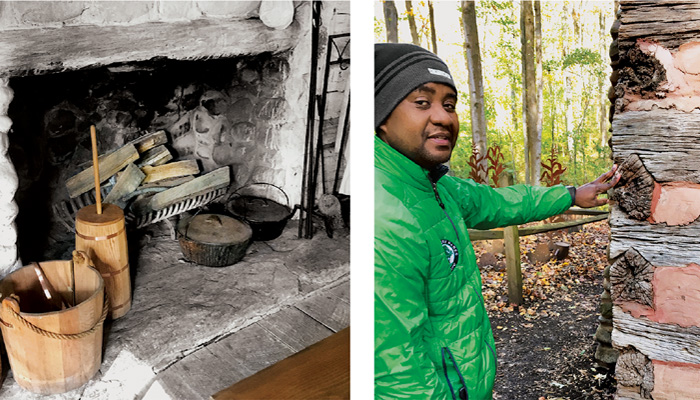Naturalist Aide Quame DeJonge ’17

On most Saturdays and Sundays, visitors to the Brookside Nature Center in Wheaton Regional Park will encounter Quame DeJonge (Dee-yong). DeJonge joined the Montgomery County Parks staff as an interpreter and naturalist aide after four years of volunteer service on weekends. He is currently an environmental science and policy major at the Rockville Campus.
What motivated you to get involved with the Harper 1870s Homestead?
When I came to this country from Guyana with my father in 2010, I needed to connect to something familiar. Through the College’s Educational Opportunity Center, I found the Brookside Nature Center on a list of the cooperative education and internship program’s volunteer opportunities, and I looked into it right away. That is how I encountered the log home built in 1870 by freed slave Thomas Harper, and the Harper family relatives, some of whom I have met.

Framed portrait of John Harper, Thomas Harper’s brother, donated by Harper family descendants.
What impresses you most about the people who settled the homestead?
This house was relocated from its original 18-acre property, called Jonesville (near today’s Poolesville, Md.). It was part of a settlement built by two African American brothers who were freed slaves. We know there was a family of 15 living in the house at one time. The living situation would have required cooperation among family members. I tell people—including visitors from around the world—what life was like in this cabin. Survival meant growing and hunting for food, gathering wood for fires to cook and keep warm, as well as making things and trading. Children would have contributed to the family’s functioning by gathering firewood and water when old enough to carry. But we also have a few simple wooden toys here to show that people enjoyed themselves, too.

The relocated Harper 1870 Cabin features a newly restored working fireplace, staircase, and loft.
What do visitors here most often find surprising to learn?
There is a unique blending of cultures here and excellent craftsmanship—in the beams, chimney, windows, staircase. The construction shows the skills and cultural knowledge people in slavery acquired. For example, although the Harper Homestead was built by an African American, the V notch—or manner in which the logs were shaped for construction—is a German-origin construction method. At the original site, the mortar between beams was made of red clay from the creek. The clay was boiled together with hog hair to make a hard plaster that kept out insects and cold winds. Had they been owned by someone from Denmark or England or elsewhere, they would have learned how to construct it a little differently, how to prepare foods differently, etc. We also understand now how much the natural environment determined African American lifestyle and diet (e.g., housing, food, clothing, medicine, etc.) based on where the cabin was located and the surrounding natural resources.

DeJonge (right) shows pointed-tops, or V-notch beams, of Black Oak, a once plentiful local resource. The notching style is a construction technique most likely appropriated from German slave owners. Cabin interior (left):
butter churn and homemade buckets and brooms. Photos by Diane Bosser.
Would you say there is enough research/preservation of freed slaves’ lives being done?
Another structure from Jonesville was appropriated by the Smithsonian for the new African American History Museum in Washington. There are still structures there to be preserved, as well as another site in Poolesville called Sugarland. The Harper family has survived and still has a few elders living there—they have had family reunions here at the park. I have asked them to write down their history, including any family recipes because even they may provide insight into the past. They have donated items, including the photograph of Thomas Harper (the cabin’s original owner) on the mantel, and an icebox from later years. Funding is needed for upkeep and ongoing research. Protecting both sites would preserve evidence of the African American heritage and culture.
What of your efforts to get White House funding/support?
I have advocated for funding for repairs and preservation from several sources, including the Montgomery County executive and, yes, President Obama. I wrote to him not just because he is African American but because as a culturally mixed person, he would see how Jonesville and Sugarland are unique to African American history. I intend to notify President-elect Trump of the untapped potential we have here for preserving these sites and for teaching more about them in our schools. I believe the stories of how our ancestors survived through a shared sense of purpose, direction, and community can inspire current and future generations.
—Diane Bosser
The Harper Cabin is open Saturdays, 9 a.m. –5 p.m. and Sundays, 1–5 p.m. Quame keeps a campfire going during fall and winter months: “marshmallow roasters welcome anytime.”


